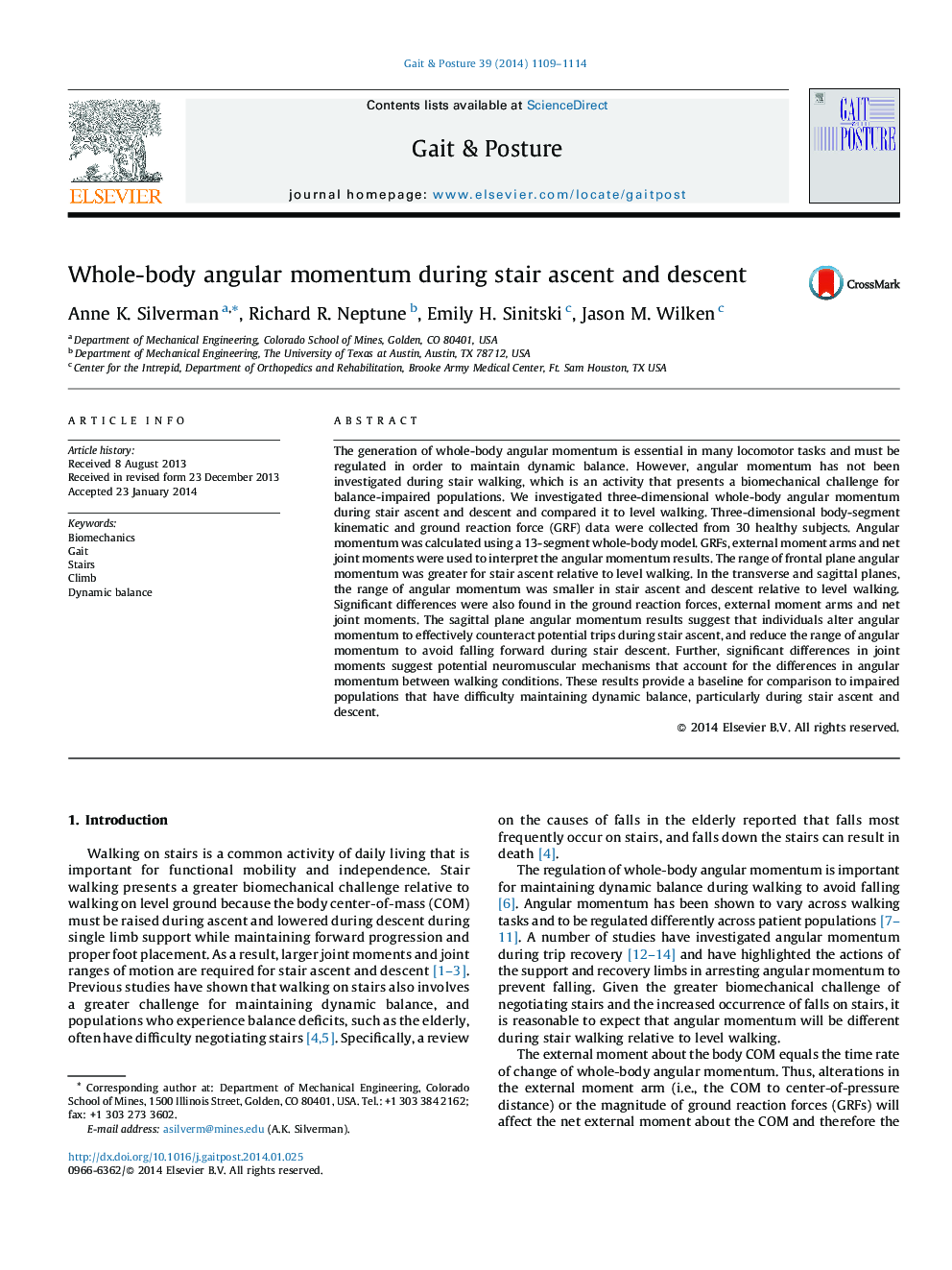| Article ID | Journal | Published Year | Pages | File Type |
|---|---|---|---|---|
| 6206313 | Gait & Posture | 2014 | 6 Pages |
â¢We examined whole-body angular momentum during walking on stairs.â¢The angular momentum range was generally decreased for stair walking relative to level walking.â¢Altered angular momentum suggests neuromuscular strategies to avoid falling on stairs.â¢Results for healthy subjects provide a baseline comparison for studying impaired populations.
The generation of whole-body angular momentum is essential in many locomotor tasks and must be regulated in order to maintain dynamic balance. However, angular momentum has not been investigated during stair walking, which is an activity that presents a biomechanical challenge for balance-impaired populations. We investigated three-dimensional whole-body angular momentum during stair ascent and descent and compared it to level walking. Three-dimensional body-segment kinematic and ground reaction force (GRF) data were collected from 30 healthy subjects. Angular momentum was calculated using a 13-segment whole-body model. GRFs, external moment arms and net joint moments were used to interpret the angular momentum results. The range of frontal plane angular momentum was greater for stair ascent relative to level walking. In the transverse and sagittal planes, the range of angular momentum was smaller in stair ascent and descent relative to level walking. Significant differences were also found in the ground reaction forces, external moment arms and net joint moments. The sagittal plane angular momentum results suggest that individuals alter angular momentum to effectively counteract potential trips during stair ascent, and reduce the range of angular momentum to avoid falling forward during stair descent. Further, significant differences in joint moments suggest potential neuromuscular mechanisms that account for the differences in angular momentum between walking conditions. These results provide a baseline for comparison to impaired populations that have difficulty maintaining dynamic balance, particularly during stair ascent and descent.
